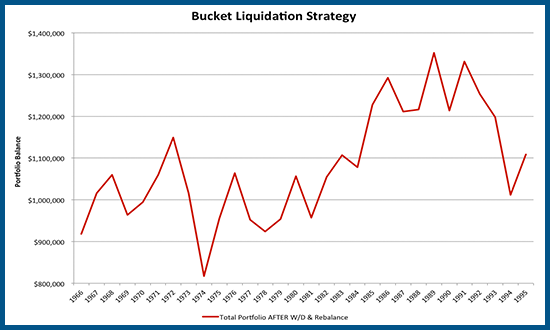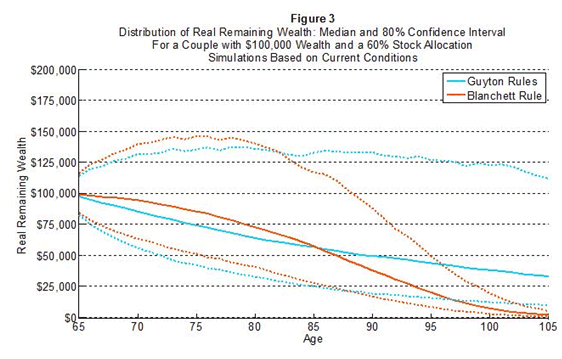How Much Can Clients Spend in Retirement A Test of the Two Most Prominent Approaches
Post on: 16 Март, 2015 No Comment

by Wade Pfau
In my last article. I described research-based innovations for variable withdrawal strategies from retirement portfolios. In this article, I put Jonathan Guytons decision rules and David Blanchetts simplified withdrawal formula to the test. I simulate the income and remaining wealth generated with these two strategies using different underlying Monte Carlo assumptions. These results provide planners with a better understanding about the potential spending paths generated by these different approaches, and they also suggest where further improvements can be made with regard to designing variable retirement withdrawal strategies.
Brief overview of the spending strategies
My last article explained two of the key research-based variable retirement withdrawal frameworks: Jonathan Guytons and Dave Blanchetts. Heres a brief refresher.
Guytons decision rules have been popular with advisors for the past 10 years, providing a guide for increasing initial retirement spending on the condition that future spending may not always increase with inflation and may need to be cut when markets underperform. He proposed three decision rules:
- Withdrawal rule, which increases withdrawals for inflation if the portfolio experienced a positive total return in the previous year.
- Capital preservation rule, which reduces real spending by 10% if the years current withdrawal rate grows 20% above its initial level.
- Prosperity rule, which increases real spending by 10% if the current withdrawal rate fell by at least 20% below its initial level.

Though it will not be part of my simulations, he also included a portfolio management rule, which focuses on how the investment portfolio is drawn down and rebalanced between different assets.
The second framework I simulate has a long lineage culminating in Blanchetts development of a simple formula to update sustainable withdrawal rates on a year-by-year basis, which he described in a September 2013 Journal of Financial Planning article. Whereas Guytons decision rules generally call for inflation-adjusted spending to continue unless certain conditions are met, Blanchetts formula provides a new withdrawal rate to use with remaining financial assets for each year of retirement. This creates a more volatile spending path. Advisors input four variables to determine an optimal withdrawal rate for each year of retirement: asset allocation, the remaining retirement time horizon, the targeted probability of success and an alpha term that reflects portfolio over- or underperformance relative to the built-in capital market expectations.
As this is a dynamic withdrawal model, Blanchett found that the optimal retirement horizon is the clients median remaining life expectancy plus two years, and the optimal target probability of success is 80%. These parameters, when combined with the clients asset allocation and capital-market expectations, provide a unique sustainable withdrawal rate for each year of retirement.
Capital-market expectations
To simulate spending and wealth with these withdrawal strategies, we must make a decision about capital-market expectations. This, in turn, suggests an appropriate initial withdrawal rate to begin retirement. In this regard, Blanchetts system proves to be more flexible than Guytons. For illustration purposes, I will consider two sets of capital-market expectations.
Table 1 provides two sets of capital-market assumptions on which the simulations will be based (using a multivariate lognormal distribution).
The first set of expectations is based on Harold Evenskys current inputs for MoneyGuidePro. These assumptions reflect lower stock and bond returns than implied by historical averages, which makes sense. Market conditions today suggest much less optimism about what may work for retirees. Interest rates are at historic lows and stock markets are overvalued based on metrics such as Shillers CAPE.
Nonetheless, many advisors are comfortable projecting forward the more optimistic historical experience of the U.S. For the second set of simulations, I used Ibbotson Associates’ Stocks, Bonds, Bills, and Inflation (SBBI) data on total returns for U.S. financial markets since 1926. I used the S&P 500 index to represent the stock market and the intermediate-term U.S. government bond index to represent the bond market. In all cases, returns were calculated on an annual basis, withdrawals are taken at the beginning of each year and the portfolio was rebalanced annually to its target allocation.














